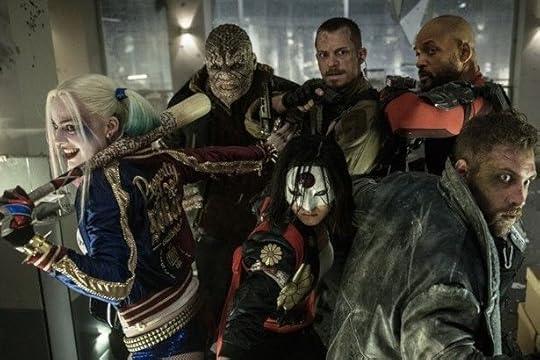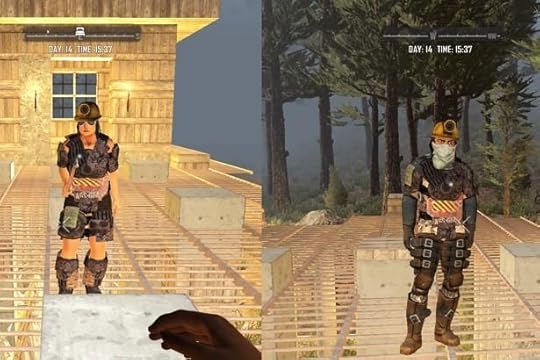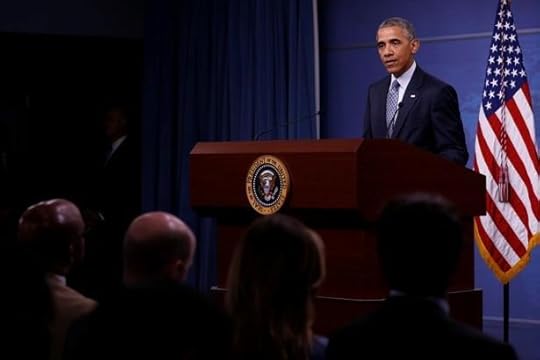Atlantic Monthly Contributors's Blog, page 106
August 5, 2016
The ANC's Historic Loss in South African Municipal Elections

NEWS BRIEF The African National Congress (ANC) suffered its worst electoral loss since the end of apartheid in 1994, when it lost Nelson Mandela Bay to the opposition Democratic Alliance (DA) in municipal elections.
BREAKING: We have officially WON Nelson Mandela Bay!!
DA: 46.55%
ANC: 41.02%#KhulaDA pic.twitter.com/tx6T4pyxtx
— #KhulaDA (@Our_DA) August 5, 2016
DA won the area, named for the ANC’s iconic leader and South Africa’s first post-apartheid president, with 46.7 percent of the vote; the ANC won 41 percent. The ANC initially said it would challenge the results, citing voting irregularities, but appeared to have backed away from that claim.
“Of course we have had setbacks in areas like the Nelson Mandela Bay, but we are magnanimous in victory and also magnanimous in defeat because we are democrats,” Jackson Mthembu, the ANC chief whip, told eNews Channel Africa.
He pointed out that nationally the ANC still won a majority of votes. The party has 56 percent of the votes around South Africa. But the vote is close in both Pretoria, the capital, as well as Johannesburg. Final election results are expected to be announced late Friday.
Mmusi Maimane, the DA leader, called the results a “vote for change.”
Thank you to NMB residents who came out in their numbers to vote for change. A shout out to our Activists who worked tirelessly! #KhulaDA
— Mmusi Maimane (@MmusiMaimane) August 5, 2016
The economy was a major issue in the municipal election; unemployment stands at 27 percent. Voters also raised concerns over President Jacob Zuma spending $15 million in state funds to upgrade his private estate—actions the South African Constitutional Court ruled unconstitutional in March.
Zuma is barred by term limits from seeking a third term in the national elections, which are scheduled for 2019.

Suicide Squad Is the Worst of the Worst

Imagine, for a moment, that Marvel Studios had decided to launch its vast cinematic universe with Captain America: Civil War. That is to say, the movie didn’t merely have to introduce Black Panther and reintroduce Spider-Man; it also had to introduce Cap himself, and Iron Man and Black Widow and Falcon and Vision and Scarlet Witch and everyone else all the way on down the line. It needed to set up backstories and narrative arcs and romantic entanglements for everyone involved. It needed to explain what brought them together. And it needed to do all of this in about 15 minutes in order to subsequently come up with a lame supervillain for them to fight.
This is the challenge that Suicide Squad sets for itself early, and it succeeds just about as poorly as you might imagine. Intelligence operative Amanda Waller (Viola Davis) is at dinner with a general, when she slaps down a binder marked TOP SECRET in letters big enough to be seen from space. In it are “the worst of the worst,” an assembly of evildoers whom Waller has managed to corral in a super-secure facility; she wants to form them into a team of on-the-leash supervillains who can do the government’s dirty work with utter deniability.
It turns out, of course, that they’re not really as evil as advertised, at least not compared to their captors. The first two scenes of the movie feature the prison guards meting out sadistic punishments to their charges. This is by no means the last time the movie proposes that its bad guys are actually good guys. But it offers an early, disheartening glimpse of just how little confidence the filmmakers have in the animating premise of their whole endeavor.
Back to Waller and the corner-cutting, expository intros of her TOP SECRET folder: There’s Deadshot (Will Smith), “the most wanted hitman in the world”; Harley Quinn (Margot Robbie), once the Joker’s psychiatrist, now his psycho girlfriend; Captain Boomerang (Jai Courtney), a guy who, well, hurls boomerangs; El Diablo (Jay Hernandez), a human flamethrower; Killer Croc (Adewale Akinnuoye-Agbaje, hidden under several inches of prosthesis), a super-strong reptile-man; and the Enchantress (Cara Delevingne), a former archeologist intermittently inhabited by the spirit of an ancient witch. For reasons that remain hazy (other than to demonstrate how cunning she is), Waller engineers a love affair between the Enchantress and Rick Flag (Joel Kinnaman), “the finest special forces officer this nation has ever produced.” The latter is thereby appointed to keep his dubious troops—yes, this is the titular “Suicide Squad”—on the (relatively) straight and narrow.
Are you exhausted yet? I know I was. It feels like roll call on the first day of summer camp—“Tell us a little bit about yourself”—except that almost every character offers either a Tragic Family Melodrama or a Completely Inert and Uninteresting Romance. The producers of the movie could have saved time and money by simply instructing moviegoers to consult the Wikipedia pages of everyone in question before arriving at the theater. Don’t worry though: About half an hour later the movie will introduce two more squad members: Katana (Karen Fukuhara), whose samurai sword “steals souls”; and Slipknot (Adam Beach), “the man who can climb anything.” No, I’m not kidding: He literally has the superpowers of a squirrel.
As I hope I have made apparent, the storytelling that brings all these characters together so quickly is lazy to the point of professional negligence. But it still constitutes storytelling, which is more than one can safely say of the rest of the picture. The director David Ayer (End of Watch) has done solid work in the past, so it’s hard to say exactly what went so terribly wrong here without falling back on the explanation that Zack Snyder, who has largely overseen the DC Extended Universe so far, must somehow be to blame. (Glum? Check. Ultraviolent? Check. Devoid of any apparent empathy for anyone involved…?)
Robbie is genuinely terrific as Harley Quinn, earning the movie’s best lines and nailing almost every one of them.
Before I go on, I should mention the good: In stark contrast to its immediate DC antecedents (Snyder’s Man of Steel and Batman v Superman), Suicide Squad recognizes that, when dealing with super-types, good or evil, a dash of humor goes a long way. (That it took DC so long to figure out what Marvel has known from the start is no small amazement.) Robbie is genuinely terrific as Harley Quinn, earning the movie’s best lines and nailing almost every one of them. (That said, the camera’s incessant leering at her hot-panted posterior is a bit, let us say, Michael Bay-ish.) And Smith is considerably better than the mediocre material he’s given here. Also ... No, that’s it. I have nothing else nice to say.
The plot—and I use the term liberally—really gets underway after the Enchantress’s evil spirit takes control of her archeologist alter ego and liberates her equally evil spirit brother, Incubus. (I learned his name from imdb.com; to the best of my memory, it’s never mentioned in the movie.) He immediately begins a fairly pointless rampage in “Midway City,” which the filmmakers evidently felt was an important locale to introduce for their ongoing DC world-building.
So who does Waller initially send to deal with this civic calamity? Flag and his girlfriend the Enchantress, who has temporarily resumed her human form. She, of course, quickly becomes a demonic entity again, joining her brother and declaring her intention to “build a machine to destroy all of them”—a.k.a. humanity. (And yes, for those curious: This central, evil-plot motivation plays virtually no role in anything that ensues.) As Flag later admits, hilariously, of this preliminary mission: “Needless to say, the whole thing was a bad idea.” Ya think?
One might assume that the instantaneous defection of Waller’s most powerful Squad member would call into question her entire project. But she is undeterred, sending the rest of the team in to deal with the sibling demigods. (Actually, their initial mission is to rescue an unknown civilian from Midway City, and they only afterward decide to go after the Enchantress and Incubus. But trust me: You’ll wish the movie had left out this particular narrative “twist.”)
What Leto offers as the Joker is pure Ledger-lite, a heavy dose of antic wickedness ungrounded by anything deeper or more intriguing.
The team bickers, as such teams inevitably do—in particular Smith’s Deadshot and Kinnaman’s Flag. But because we have so little invested in any of these characters (again, Marvel provides the obvious contrast), this bickering is not charming or elucidating, merely tiresome: people we don’t particularly know or like saying unpleasant things to other people we don’t particularly know or like.
Given the exposition-heavy opening and the bicker-heavy middle, Suicide Squad has remarkably little time left over for any actual action. More remarkable still, this is actually a good thing, as the action sequences the movie does provide are plodding and unimaginative. Part of the problem lies in the characters themselves. El Diablo is really the only Squad member who has a genuine superpower apart from being strong or proficient with weapons—and he initially refuses to use his power, for reasons that will eventually be revealed in a wearisome backstory. As such, the litany of violent shooting, slicing, and baseball-batting (Ms. Quinn’s specialty) quickly becomes tedious. The first big action set-piece is further undermined by the fact that the movie has not even bothered to introduce the—literally—faceless enemies the Squad is fighting. (That this oversight is presumably deliberate makes it no less inept.) Indeed, the fact that virtually all of the film’s action takes place at night can’t help but leave the impression that the filmmakers don’t actually want us to see what’s going on.
Which brings me to the Joker, played by Jared Leto in what amounts to a super-cameo. Post-Nicholson and (especially) post-Heath Ledger, it’s unclear why any actor would want to step into this role and invite what are almost certain to be unflattering comparisons. But perhaps still dazzled by the glow of his weak-year Oscar for Dallas Buyers Club, Leto clearly believed himself up to the task, as evidenced by the near-endless boasts about his method acting. Alas, as amusing as it must have been for the cast-mates who received such in-character gifts from him as used condoms, anal beads, a live rat, and a dead pig, what Leto offers as the Joker is pure Ledger-lite, a heavy dose of antic wickedness ungrounded by anything deeper or more intriguing. When he describes love-of-his-life Harley Quinn as “fire in my loins, itch in my crotch” he traverses the distance between Nabokov and your average horny 9th grader in barely half-a-dozen words.
It would be easy to keep enumerating the almost countless flaws of Suicide Squad: the senseless, lackadaisical killing; the desperate, maudlin attempts at emotional connection; the risibly silly climax, which rather resembles the ending of either Ghostbusters except that it’s played straight; the cliché-ridden soundtrack (“Fortunate Son,” “Sympathy for the Devil,” “Dirty Deeds Done Dirt Cheap,” “Bohemian Rhapsody,” and on and on). But if I have not yet convinced you of the movie’s astonishingly slipshod quality, I’m unlikely ever to do so.
Late in the film, Ayer indulges in a little franchise cross-pollination with a cameo (not the first) by a character from elsewhere in the DC-verse. This time, however, the character arrives with a healthy dose of advice for Squad mastermind Waller—and perhaps, by extension, for DC universe mastermind Snyder: “You should shut it down.”
If only.

Date Night With the Zombies

I am watching, helpless and terrified, as the love of my life is beset by a raging pack of zombies intent on tearing him apart. I feel cowardly and ashamed, perched as I am on a platform far above him. While he was down in the trenches, fortifying the pillars that lead up into our base, I was up on this bridge smelting iron, and now all I can do is pluck lamely at my bow and arrows, trying to pick off a zombie here and there while he fights desperately for his life.
As I sit gasping on the edge of my seat, I’m surprised by the intensity of my adrenaline and terror. There may be zombies on screen, but in real life, we’re in no danger. We’re in the comfort of our living room, seated in front of our Playstation 4, playing a wonderful, unpolished game called 7 Days to Die.
In the nearly nine years of our romance, we’ve gotten better over time at finding the experiences we enjoy most together, dates that balance our very different enthusiasms. We don’t just game together: This year we’ve hiked together in Rock Creek Park, and strolled down Provincetown’s Commercial Street in skirts and corsets. I took him to see Hamilton on Valentine’s Day; for my birthday, he swept me off to Brooklyn for a performance of a lovely, immersive play called Then She Fell. We’ve come a long way from our first date, when I took him to a seafood lunch, not knowing his distaste for anything that comes from the ocean. But few dates have been as mutually enthralling for us as this game that was released to Playstation just this June but has already devoured hours of our time.
These types of collaborative, two-player, side-by-side (“couch co-op”) games seem to be a rarer and rarer breed in the age of massively multiplayer online questing. But I’ve always been a sucker for couch co-op, ever since the days in grade school when my cousin and I would spend whole days in our pajamas playing Secret of Mana together on my Super Nintendo. And even when my boyfriend and I find a couch co-op game, it’s not always a fit for our very different styles of play: While I want a dramatic story with vivid characters, he wants nothing more than to speed past the boring dialogue and mash some bad guys in the face. A few games succeed at scratching both of these itches, but none as satisfyingly as this one.
The past few years have given rise to a boomlet in games like 7 Days to Die that occupy a very specific niche: the survival horror crafting game. Games in this subgenre—which include DayZ, Rust, Fallout 4, and (to a lesser extent) Don’t Starve—tend to marry the thrills and aesthetics of Resident Evil with the strategy and creativity of Minecraft. The premise of 7 Days to Die is simple: You scour the game world for resources to fortify yourself against a raging zombie horde that descends upon you every seven days. (You have the option to define the length of a day in the game, up to a couple of hours. So “seven days” in-game might mean as much as 14 hours in actual time.) But atop that basic premise, the game’s makers have built a surprisingly complex and complementary set of mechanics.
The slow, laborious task of building our base has been a project that brings into vivid focus our traits, our differences, and the ways we complement one another.
Because zombies become more prolific and aggressive at night, you might spend your days roaming a randomly generated game world, fending off scattered zombies and stalking pigs and deer for food. Or you might choose to follow a derelict road into an abandoned town, where you can scour bookstores and hardware shops for vital knowledge and supplies. At night, when the zombies are out in force, you can stick close to your base, making random repairs and fortifications, or meditatively tapping stones underground to mine for iron. On the evening of the seventh day, you find yourself in a tower defense game, hoping against hope that your walls will stand against a zombie onslaught. Having a partner by your side effectively boosts your chances of survival—one of you can scavenge while the other tends the mine, or you can venture out together and watch one another’s back. All of this makes for a varied, enjoyable game … if you can get past its instability.
The biggest knock against 7 Days to Die, particularly on consoles, is the surfeit of bugs that plague the game, some of which are potentially fatal to its enjoyment. Online forums warn against playing as two of the characters on offer for PS4 (Clint and Miguel), because of a bug that sometimes prevents the game from loading a save from either of those characters. Reports abound of players unable to load games after spending dozens of hours building forts and leveling up. The game’s menus, ported over from PC editions that were built for a mouse and cursor, can be cussedly slow to navigate with a console controller. The longer we’ve played the game, the more it seems to lag, crash, and jitter.
The game began its life after a successful 2013 Kickstarter campaign that brought its developers, “The Fun Pimps,” half a million dollars. They released an early build on Steam a few months later, joining the increasingly popular practice of releasing games to eager players before development is finished and the bugs are hammered out, in part so developers can learn from player behavior and adapt the game in response. Now, nearly three years later, the game is still in alpha—that is, not yet even beta—form, and the lack of polish often shows.
Still, for all its flaws, I find myself grateful for this game, at worst a welcome distraction from a litany of depressing headlines, and at best an experience I can savor with a person I love, an experience that reveals and reinforces new dimensions of our personalities and our relationship. And I’m not the only one who treats the game as addictively entertaining couples therapy. One Redditor told a story of looking on in admiration as, right before his eyes, his wife became a bloodthirsty zombie slayer. “I look over to her [in real life] and she is literally bouncing on the sofa,” the user wrote, “a grin as big as the sun spread across her face.”
There on the couch, I held my breath as my reckless, impetuous partner fought off the zombies pressing in relentlessly from every side.
The intimacy of couch co-op, the pleasure of playing side-by-side with one’s partner, makes moments like that one possible, but it presents certain tradeoffs. The only reason my partner and I can play this game this way is that we forked out the money a while ago to buy a television large enough to make split-screen gameplay tolerable. Winda Benedetti, who writes about games for NBC News, made a different choice with her husband: They opted to buy two Xboxes, so they could play Borderlands together on separate screens. (They made the sensible calculation that the dual setups would be more cost-effective than hours of couples therapy.)
Other couples may get more out of beat-em-up games like Super Smash Bros, or MMOs such as World of Warcraft. The web is rife with lists of good games for couples; the comedian Kumail Nanjiani and his partner Emily Gordon even have a podcast about gaming together. Part of the reason 7 Days to Die has resonated so strongly with my partner and me is that the slow, laborious task of building our base has been a project—like cooking a complicated recipe—that brings into vivid focus our traits, our differences, and the ways we complement one another.
In life, as in the game, my love is reckless and impetuous, endlessly sweet and giving, but completely unabashed about confrontation. He’s the person I yell out for when the presence of a large insect has rendered me immobile, and he always takes care of it with a smile. I, on the other hand, am cautious and diplomatic, wary of public discord, prone to biting my tongue. We still sometimes find a little dark humor in the moment years ago when I had to come down to the street from our apartment and smooth things over with a police officer who was nearly at the point of putting him in handcuffs, after pulling him over for a minor traffic offense. He swore he wasn’t in the wrong, I told him to contest the matter in court rather than yelling at the nice officer, and he escaped with a warning. How often is it, I joke with him now, that a white guy in D.C. calls a black guy who’s not his lawyer to make sure the cops don’t haul him in?
There, on the couch, playing 7 Days to Die, I held my breath as my reckless, impetuous partner, who’d been down in the trenches of our base doing valuable but perilous scut work, fought off the zombies pressing in relentlessly from every side. I exhaled in relief when he miraculously found an alcove to duck into, out of their reach, and I managed to dispatch the remaining zombies from my perch far above. Or so I thought. He stepped out of the alcove, bruised and close to death, and surprise: Another trio of zombies was waiting in ambush, and he was overwhelmed. His character respawned at a distant location with a little less health and a missing toolbelt.
He sat back on the couch, somewhat spent. With inklings of dread in his voice, he cautiously broached a subject he worried might be delicate. The episode with the zombies had reinforced his fear that we might have to abandon the base we’d built and start anew with a different plan, in a different location, scrapping hours of work. But in my mind, I was already sketching out designs for a new fort, and I was, more than anything, excited to build it with him at my side. I found myself beaming at him in admiration.
“You’re brave,” I told him. And I meant it. With him, I’d take on the apocalypse.

August 4, 2016
Obama’s View of ISIS, Two Years Into Air Strikes

NEWS BRIEF President Obama frames U.S. military operations against the Islamic State in Iraq and Syria as key to restricting its ability to inspire homegrown terrorists all over the world. “The strategy we have in Syria and Iraq is necessary, but not sufficient,” he said. “We have to do a better job of disrupting networks, and those networks are more active in Europe than they are here. But we don’t know what we don’t know, and so it’s conceivable that there are some networks here that could be activated.”
Obama addressed reporters at a press conference Thursday after meeting with national-security officials at the Pentagon for a briefing on the military campaign against the Islamic State. Next week marks almost two years since the U.S. began its air strikes in Iraq and Syria. U.S. forces now conduct near-daily strikes in those countries, and last November expanded its air campaign to a handful of ISIS targets in Libya. This week, the Pentagon announced its latest and largest military action in Libya to date: air strikes in the city of Sirte, which has been under ISIS control since early 2015.
Obama said Thursday the terror threat to the homeland is serious, because of the lone actors or small cells that can become radicalized on the internet and carry out attacks on the Islamic State’s behalf. But the country is still “significantly safer” than it would’ve been without U.S. involvement.
In his last press conference before leaving for a two-week vacation to Martha’s Vineyard, the president responded to recent reports about a $400 million cash payment the government made to Iran in January. White House officials have been on the defensive since the first report, from The Wall Street Journal, revealed new details about the money, which was delivered in non-U.S. currency. The Journal reports it was part of a larger settlement between the U.S. and Iranian governments “to resolve a decades-old dispute over a failed arms deal signed just before the 1979 fall of Iran’s last monarch.”
But Republican critics allege the money was essentially ransom for four U.S. prisoners released at the time the settlement was announced; or that it was otherwise tied to the administration’s Iran nuclear deal, which went into effect in January. Obama dismissed this claim Thursday.
“We don't pay ransom,” Obama said. “The notion that we would somehow start now, in this high-profile way, and I announced it to the world even as we are looking into the faces of other families whose loved ones are being held hostage—and say to them that we don't pay ransom—defies logic.”
The president suggested critics zeroed in on the fact that the U.S. made the payment in cash “because it kind of feels like some kind of spy novel or crime novel.” He said cash was sent because U.S. sanctions against Iran bar that country from dealing with U.S. financial institutions, which would presumably handle a check or wire transfer. “Some of you may recall we announced these payments in January, many months ago. It wasn’t a secret,” he said. “This wasn’t some nefarious deal.”

The Russian Athletes Going to Rio

NEWS BRIEF A review panel with the International Olympic Committee (IOC) has approved 270 Russian athletes to compete in the Rio games a day before the opening ceremonies.
The decision, announced Thursday, means about 70 percent of Russia’s national team will be allowed to participate. Late last month, the IOC decided not to ban the team altogether from the games, following an investigation that revealed widespread, state-sponsored illegal doping among athletes.
The eligible athletes include, according to Reuters:
The International Boxing Association (AIBA) said all 11 Russian boxers who qualified for the Games had been given the all clear.
They will be joined by eight Russian tennis players, 18 shooters, 11 judokas and Russian golfer Maria Verchenova, the sports' international federations said.
Russian news agency R-Sport reported that 29 Russian swimmers and canoeing world champion Andrey Kraitor would also be allowed to compete.
An investigation commissioned by the World Anti-Doping Agency found last month that the Russian government, all the way up to its top intelligence agency, the FSB, had helped athletes use performance-enhancing drugs, and then covered its tracks by swapping out dirty urine for clean urine when athlete samples were collected for testing. In June, when news reports of Russian doping intensified, the IOC supported the decision to ban all members of Russia’s track-and-field program from the games, which begin Friday.

Mike Pence Stands By His Running Mate

RALEIGH, N.C.—In the midst of an often-childish presidential campaign, sometimes it’s children who say the most insightful things.
During a town-hall-style rally near the North Carolina state capitol Thursday morning, 11-year-old Matthew Schricker took the microphone and calmly asked Governor Mike Pence what, precisely, he was doing on the ticket.
“I've been watching the news lately, and I've been noticing that you've been kind of softening up on Mr. Trump's policies and words,” Schricker asked. “Is this gonna be your role in the administration?”
Related Story

The Clinton Team's Affable Attack Dog
It was a timely question. The last few days have been perhaps the most chaotic of the Trump campaign, and Pence has increasingly been the man called in to tamp down the fuss—with varying degrees of success. There he was issuing the tempered, respectful story about the Khan family, the one Trump should have issued before moving on but didn’t. There he was expressing his strong support for Paul Ryan, a day after Trump said he wasn’t ready to endorse the House speaker for reelection.
After chuckling and praising Schricker’s astuteness on Thursday, Pence delivered a carefully calibrated answer, quietly admitting Trump was sometimes impolitic while declaring his strong support for his “new boss.”
“I couldn't be more proud to stand with Donald Trump, and we are shoulder to shoulder in this contest. And sometimes what I've learned, Matthew, and you'll learn when you're governor of North Carolina, is sometimes things don't always come out like you mean,” Pence said. “Donald Trump and I are absolutely determined to work together. We have different styles, you might have noticed that … But differences in style should never be confused with differences in conviction.”
Trump’s ability to survive the current stretch will depend in part on the ability of Pence to keep going out with a brave face and reassuring Republicans who are wavering on Trump. That’s just what he did Thursday, and if he sounded a little bit defensive, it was hard to blame him. “Up until just a short time ago it looked like he was out there all alone but now this party is united, this movement is united, and we’re going to make Donald Trump the next president of the United States,” he said.
The Republican vice-presidential nominee demonstrated the differences in style and the overlap in substance during a nearly 30-minute speech, before taking a half-dozen questions from a crowd of about 400. It was far calmer than the boisterous atmosphere at most rallies featuring the name atop the ticket. Donald Trump likes to play Puccini at his rallies; Pence’s was in an opera house, and the music was soft and twangy. Trump wings it; Pence spoke fluently, but stuck close to a familiar template and carefully crafted lines. Trump likes to assail the media; Pence did so, too, but he approached the matter with humor rather than ire.
“The party in power seems helpless to figure out our nominee,” Pence said. “And of course I’m referring to the media.” He added, “The media and the Democrats, they have the same problem. They all keep telling each other the usual methods are going to work against him. They keep thinking they’ve done him in. And then they turn on the television the next morning and Donald Trump is still standing and fighting, and he will make America great again!”
“He’s like mayonnaise on a ham sandwich!”
There’s no doubt that Trump is still fighting, but just how tall he’s standing is another question. A series of recent polls have shown his standing plummeting, and a growing drumbeat of Republicans are either abandoning their support for the ticket or edging that way with increasingly sharp criticisms. The rocky week didn’t shake the Trump-Pence supporters I talked to. They, too, tended to blame the press for overhyping or misrepresenting things. “I have no doubt we’re going to win, but it still bothers me,” said Cherie Gift, who driven 45 minutes from the town of Nashville to be at the rally. (That was nothing—Jack Snyder told me he’d driven three hours from Emerald Isle to attend.) Her friend Becky Bost, from Edgecombe County, was thrilled by Pence’s presence. “He’s like mayonnaise on a ham sandwich!” she said. “Donald is the ham. Pence complements him.”
Pence seemed more irked by President Obama, who called Trump unfit for the office this week and “woefully unprepared.” Pence quipped, “Allow me to stipulate that Barack Obama knows a lot about being woefully unprepared to be president of the United States. The thing that really bothered me was what he said about judgment. He said that Donald Trump lacked basic knowledge of critical issues and that he lacked judgment to sit in the highest office in the land.”
From there, the Indiana governor unspooled a list of foreign-policy failures, from Benghazi to ISIS, from “feigning reset with Russia” to this week’s revelation that the U.S. government secretly sent $400 million in cash to Iran in a prisoner exchange. Like a Trump speech, it was more diagnosis than prescription. Pence’s insistence that a Trump-Pence foreign policy would restore “strength” sat uneasily with Trump’s suggestion that the U.S. concede Russian control of Crimea. (So did the rhetorical question from Senator Thom Tillis, one of Pence’s warm-up acts: “Do you think a nation that allows Russia, after winning the Cold War, to emerge as a global power is America at its greatest?”) Pence defended Trump’s Republican National Convention, too, saying that if it sounded dark, that’s because Americans want an honest read on the status quo.
The event showcased some of the diversity of the Trump coalition—and of the GOP in North Carolina, which has lately emerged as a crucial swing state in November. Democrats have only won the state at the presidential level once in recent years, in 2008, but they believe that demographic changes offer an opening. Since Obama won, Republicans have captured the state legislature, the governorship, and the second of two U.S. Senate seats. Governor Pat McCrory and Senator Richard Burr, both Republicans, face tough reelection contests in November, raising the stakes even higher. On Wednesday, Democratic vice-presidential hopeful Tim Kaine stumped in Greensboro.
Compared to other Trump events I’ve covered in the state, the crowd in Raleigh was a little more Southern Tides and a little less Bass Pro, apparel-wise, and even though Pence only answered a few questions, they covered a wide range. The first question came from Dallas Woodhouse, the executive director of the state GOP, who served Pence up a chance to criticize last week’s ruling by federal judges that nullified as racially discriminatory the central elements of a tough voting law Republicans passed in 2013. A few moments later, Jean Reaves got up and told Pence she was a veteran, the wife of a Marine veteran, and the mother of soldiers who served in Iraq and Afghanistan.
“I have a concern that I don’t feel like I hear anybody talking about. I don’t think in any way, shape, or form that we need to be talking about about privatizing the VA. The VA health care is, bar none, the best in this nation,” she said. She wore a neck brace as she recuperated from a surgery she’d had at the VA hospital in Durham. “Across this whole nation we have a health-care crisis, so how are you gonna put 25 million veterans back on top of what is already a health-care crisis? Don’t let anyone convince you that that’s even remotely a part of the answer.”
Pence stepped carefully in replying. “The only thing that you said that I would gently correct is what’s available at the VA are not benefits—they are what you earned in the uniform of the United States,” he said. He asked staffers to get Reaves’s information so he could send her Donald Trump’s speech to the Veterans of Foreign Wars last month. Pence praised VA hospitals, “but we all know the stories, across the country… We’re going to make sure that VA hospitals are there and they work … but if for any reason our VA hospitals can’t meet the needs of a veteran, we are going to make it possible for the veteran to go across the street and get that care in a timely manner.”
When I spoke with Reaves after the rally, she seemed to represent a particular kind of Trump Republican, one who was concerned about social issues and control of the Supreme Court, was attracted by Trump’s business record, but also didn’t want to see government services curtailed or sent off to the private sector. In fact, she had nothing but positive things to say about Obama’s VA secretary, Robert McDonald.
“I personally believe that Secretary McDonald is currently doing a great job,” she said. “Like Donald Trump, he has a business mind. He understands business concepts. He understands large organizations. We need that. That's part of the kind of leadership that we need, is that understanding.” Reaves said she was encouraged by Pence’s answer.
“They keep thinking they’ve done him in. Then they turn on the television the next morning and Donald Trump is still standing and fighting.”
So was Matthew Schricker. Wags on Twitter who saw Schricker’s question quickly dismissed his precocity as parent-instilled, but when I caught up to him afterwards, it wasn’t so clear. His mother stood to the side, holding her son’s drink and letting him do the talking. He wore a Trump T-shirt with a Trump sticker and orange-soda stains on the corners of his mouth, his main concession to his age.
Schricker explained that he’d come up with the question by tracking the race in recent days. His question wasn’t intended to embarrass Pence so much as to enforce ideological rigor: He was a little concerned the Republicans might be going soft.
“A few weeks ago I remember Mr. Trump saying something and it seemed like Mr. Pence got a little—he kind of softened up about the Khan family, I think, and the Muslim ban, and I didn't know if this is all part of their plan, and if Trump said, ‘Ok, I got a little wild there, try to balance me out,’” he said. “I wanted to know if that was Pence, and if Mr. Trump was disappointed in him. I wanted to see if Pence was totally into the Trump campaign and if he was absolutely full-on engaged.”
He said Pence’s answer persuaded him that the good cop-bad cop act wasn’t a sign of hesitation and that, as he put it, “they were just doing it for the votes.” That was good news for Pence—one less Republican he had to reassure, even if this particular Republican wasn’t going to be able to vote in November.

Reading While Muslim

NEWS BRIEF A 27-year-old British-Muslim’s honeymoon ended in detention when officials at Doncaster Airport questioned her for suspicious reading material, the Independent reports. Her reading: an anthology of Syrian short stories, poems, and essays.
Faizah Shaheen, a National Health Services worker from Leeds who focuses on deterring young mental-health patients from radicalization, was returning home July 25 from her honeymoon in Marmaris, Turkey, when she was stopped by South Yorkshire Police. They questioned her for 15 minutes in connection with a book she’d been reading two weeks earlier on her flight to Turkey. A Thomson Airways worker reportedly alerted officials about the book, Malu Halasa’s Syria Speaks: Art and Culture from the Frontline.
Shaheen said she intends to file formal complaints against Thomson Airways and the police, calling the experience “very hurtful.” She told the Independent:
I asked what was going on and they said I had been reported due to a book I was reading and was to be questioned under the Terrorism Act. I became very angry and upset. … I do question if whether it would be different if it was someone who wasn’t Muslim.
Under Schedule 7 of the 2000 Terrorism Act, British police in a port or border area are lawfully permitted to stop, question, and detain individuals without cause if they are suspected of involvement in criminal activity, including terrorism.
A Thomson Airways representative responded to the incident in a statement obtained by The Guardian, saying:
Our crew undergo general safety and security awareness training on a regular basis. As part of this they are encouraged to be vigilant and share any information or questions with the relevant authorities. We appreciate that in this instance Ms Shaheen may have felt that overcaution had been exercised. However, like all airlines, our crew are trained to report any concerns they may have as a precaution
Zaher Omareen, the co-editor of the book, spoke out in Shaheen’s defense.
“Judging individuals and even taking measures against them based on their race, their looks, their language, or the printed words they carry is unacceptable and unjustifiable,” she told The Guardian.
In April, Khairuldeen Makhzoomi, a student at the University of California, Berkeley, was removed from a Southwest Airlines flight, detained by officials at Los Angeles airport, and questioned by the FBI after another passenger reported him for making comments in Arabic while on a phone call that were “perceived to be threatening.” Makhzoomi, a Muslim of Iraqi descent, did not bring charges against the airline, though he did request a formal apology.
In May, Guido Menzio, an economist at the University of Pennsylvania, was working on a differential equation while on an American Airlines flight. A fellow passenger mistook it for Arabic writing. He was questioned for possible ties to terrorism before being released.

How to Watch the 2016 Rio Olympics

Watching the Olympics is a multimedia experience that should be perfectly suited to the age of TV streaming. Want to catch a volleyball game without missing that day’s individual dressage? For the most part you can: Viewers are no longer shackled to time-delayed primetime broadcasts for the events they want to watch. Indeed, watching the 2016 Rio Games, which begin with the Opening Ceremony at 7:30 p.m. on Friday August 5, will be easier than ever thanks to NBC’s blanket approach to airing thousands of hours of events both on cable and online. Unfortunately, the best viewing experience will mostly entail a cable subscription, but there are a few other ways to watch in the U.S. without shelling out too many extra dollars.
NBC will broadcast the Olympics …
The network paid the dear price of $1.2 billion to secure broadcasting rights for the Rio Games. After the opening ceremony on Friday, the network will air prime-time Olympic coverage for the entire two weeks of the Games. Viewers can catch up on the day’s biggest highlights from 8 p.m. to midnight every day, presented by hosts including Bob Costas, Ryan Seacrest, Al Michaels, Rebecca Lowe, and Dan Patrick. The channel will also air live coverage for most of the day, from 10 a.m. to 5 p.m., until the Games end on August 21.
The main NBC broadcast will feature the biggest events: Swimming, gymnastics, diving, beach volleyball, and anything else the United States excels at, but it should dip into all of the most newsworthy events as they play out. Unlike the Summer Games of the recent past (which took place in Sydney, Athens, Beijing, and London), the games in Rio will be easier for American viewers to keep track of during the day, because the city’s time zone is only one hour ahead of Eastern Standard Time.
… But other cable channels are airing events too
If NBC isn’t airing anything of interest, there are many other cable channels that are part of the NBCUniversal umbrella. NBC Sports will be the primary backup network, focusing on basketball and soccer. The Golf Channel will, unsurprisingly, be the home of golf, which is returning to the Olympics for the first time since 1904. Bravo will feature tennis; CNBC has a number of events including volleyball, cycling, and wrestling; MSNBC counts rugby and water polo among its sports; Telemundo will broadcast hundreds of hours in Spanish; and USA will carry more basketball, along with beach volleyball, rowing, synchronized swimming, and more.
Cord-cutters might have a tricky time of it
Beyond that, the NBC Sports app and NBCOlympics.com will stream some 4,500 hours of events that don’t make it to TV, but you’ll need a cable login to view anything for more than 30 minutes. NBC has also been smart enough to respond to criticisms of its past Olympic coverage by further expanding the viewing options online. Still, in an era of binge-watchers and cord-cutters, the Olympics are the kind of live event that the network will try to milk for every possible dollar, younger viewers be damned.
NBC’s approach is emblematic of the new path major networks have to chart in an era where ratings are more diluted than ever. No longer can it rely on its regular prime-time hits to generate ad revenue—most of the younger generation is happy to wait for it to appear on Hulu or Netflix months later, ready for binge-watching. The Olympics have been viewed for years as a prestige event, a gaudy laurel for NBC that couldn’t possibly justify the immense cost needed to secure the broadcast rights, though that has begun to change.
But there are work-arounds
Internet-only viewers can subscribe to NBC’s cable channels through PlayStation Vue, which is available on PlayStations, Roku boxes, and Amazon Fire TV, for between $30 and $40 a month. Apple TV users can also get access to some of the channels—NBC, NBC Sports, MSNBC, CNBC, USA, and Bravo—through Sling TV, a $25-a-month TV streaming service available as an app.
What about 2020?
This year, NBC agreed to pay a staggering $7.75 billion for the rights to future Olympics through 2032. Back in 2010, the network was judged to have vastly overpaid for the Sochi Winter Games, losing hundreds of millions because of the steep price paid to broadcast them. But live events like the Olympics are increasingly the kind of coveted property that advertising executives know viewers will actually tune into, rather than relying on their DVRs so they can skip through the commercials.
The network had assumed it would lose $200 million on the 2012 London Games; it ended up breaking even, because of higher-than-expected ratings. The seemingly vast overpay for the Olympics through 2032 is a bet on the future of TV, where live events will be the main purpose of broadcasting. That’s why Comcast, the cable company that now owns NBCUniversal, is rolling out a new set-top box that will offer access to real-time high-definition Olympic streams as well as regular cable programming. The 2016 Games might be a risky proposition for the government of Brazil and the athletes attending, but they may well prove a safer bet than expected for NBC.

Athens's First Mosque in 150 Years

NEWS BRIEF There hasn’t been a mosque in the Greek capital in 150 years. That’s about to change.
On Thursday, the Greek parliament approved plans to build a state-funded mosque near the center of Athens. Construction will cost around $1 million. Athens was the last European Union capital without a mosque, despite the estimated 300,000 Muslims living there, many of them from the Balkans.
For more than a century, Muslims in Athens have had to worship in dozens of makeshift mosques, often in the basements of homes. One of the last remaining mosques in Athens from the time of Ottoman rule, which ended in 1829, is now a museum for folk art, having also been used as a prison, army barracks, and storage facility.
Proponents of building the mosque said it could prevent the potential radicalization of the tens of thousands of new refugees who now live in Athens. According to Greek newspaper Kathimerini, Greek Education Minister Nikos Filis said Thursday:
If we wish to avoid the problems facing France and Belgium, we should not make the mistakes that they are now trying to deal with. The existence of makeshift mosques is a shame for the country as well as for the Muslim community and a danger to national security.
The project has faced heavy opposition from conservative and right-wing groups, like the neo-nazi Golden Dawn party, as well as the Greek Orthodox Church, the official religion of the Mediterranean country. The Greek government attempted to build a mosque in 2006, but the project was set aside because of legal appeals.

Zika's Threat to the U.S. Military

NEWS BRIEF More than 40 members of the U.S. military have contracted the Zika virus this year in countries where it is present, government officials said; among them a pregnant woman, for whom Zika can be particularly dangerous.
The news was first reported by the Military Times Monday. The total count stood at 33 service members then, but has risen to 41 in the past week, Military Times reported Wednesday. Some of the individuals infected are active-duty service members. Pentagon officials would not say how many remain ill, where they are exactly, and whether any have returned to the U.S.
Defense officials began tracking the virus among U.S. troops in January. In June, the Pentagon said at least 11 U.S. troops had become infected with Zika in countries where the virus is transmitted.
As of July 27, 1,658 cases of Zika infection have been reported in the continental U.S. and 4,750 in U.S. territories, including Puerto Rico, according to the CDC. The cases include 433 pregnant women in the U.S., and 422 in the territories.
Zika is primarily transmitted through Aedes mosquitoes, the same insects that spread the dengue and Chikungunya viruses. For the 1 in 5 people infected with the virus who will get sick, the symptoms are flu-like and mild; fever, rash, joint pain, and red eyes last up to a week. But for pregnant women, the virus carries far worse outcomes: Zika can cause microcephaly in babies born to infected mothers, a condition that stunts the growth of babies’ heads and can result in serious cognitive, neurological, and motor disabilities. More than 4,900 cases of Zika-related microcephaly cases have been reported this year in Brazil, the country at the center of the Zika outbreak, which has spread to other parts of South America, the Caribbean, some Pacific islands, and at least one African country, Cape Verde.
In February, the Pentagon said pregnant family members of active-duty troops and civilian employees of the Defense Department living in areas affected by Zika would be allowed to request to be relocated. The Military Times reports nearly 200 U.S. military installations exist in countries where the virus has been detected and spread.

Atlantic Monthly Contributors's Blog
- Atlantic Monthly Contributors's profile
- 1 follower



